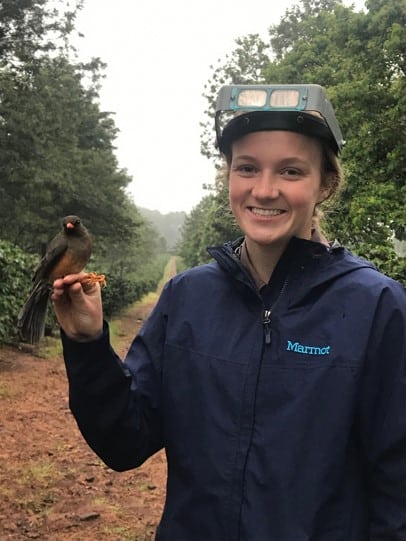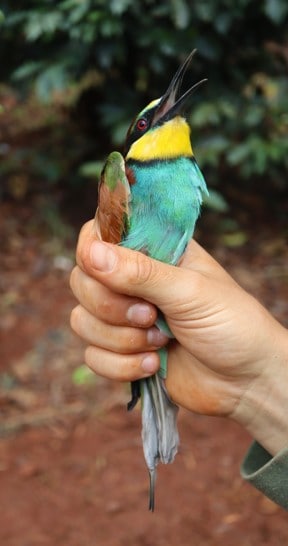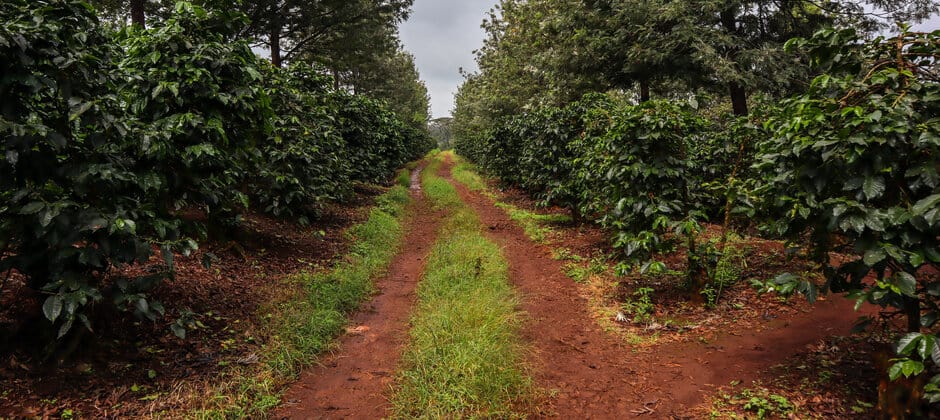Share this article
TWS2020: Birds may help coffee farms in Kenya
Birds may provide ecosystem services for coffee farms in Kenya by eating pest insects that damage crops.
By encouraging the diversity of bird species, coffee farmers may be able to stem the losses that these pests cause.
“Promoting bird diversity can increase coffee yields for farmers,” wrote TWS member Bailee Romaker, an undergraduate student in wildlife conservation and management at Missouri Western State University, and her colleagues on a poster presented at The Wildlife Society’s virtual 2020 Annual Conference.
Romaker’s work is part of a larger project that seeks to better understand a number of aspects about coffee farms in Kenya, including how planting and maintaining shade trees on coffee plantations can mediate climate change and if shade improved the quality of the coffee. Romaker focused on whether these shade trees also provided better habitats for birds that consume pest insects on the coffee plants.

Researcher Bailee Romaker with an olive thrush in Kenya.
Credit: Julie Jedlicka
Preliminary findings have revealed that a large assemblage of species are found in the coffee farms of central Kenya, and at least one of them sometimes eats pest species.
Romaker joined the project in its third year, starting in December 2019 and staying through January 2020. As her colleagues had done in previous years, she helped set out mist nets around native and nonnative trees at coffee farms that she and her colleagues monitored from sunrise until around noon.
Once they captured birds — nearly 490 in total— they placed them into brown paper bags and took them back to a field site, where they measured size and wingspan, and noted plumage, sex, age and species as quickly as possible before releasing them again.
They kept any droppings the birds left in the bags to analyze their diet for pests like big-headed ants (Pheidole spp.) and coffee borer beetles (Hypothenemus hampei).
Romaker said the researchers found a total of 66 bird species in the coffee farms. The most common birds they processed were Eurasian blackcaps (Sylvia atricapilla), but there were also birds such as the yellow and brown baglafecht weaver (Ploceus baglafecht), orange-breasted olive thrush (Turdus olivaceus) and the spectacularly technicolor European bee-eater (Merops apiaster).

A European bee-eater. Credit: Bailee Romaker
So far, they have sent 165 fecal samples for DNA sequencing from 23 of those species. They haven’t analyzed all of the samples, but Romaker said that a preliminary analysis revealed that at least one blackcap ate big-headed ants.
While research is ongoing, the scientists believe that higher bird diversity likely plays a positive role in pest control for coffee farmers.
“This can lead to an increase in income and enhance livelihoods,” the authors wrote.
This research was presented at TWS’ 2020 Virtual Conference. Conference attendees can continue to visit the virtual conference and review Romaker’s poster for six months following the live event. Click here to learn about how to take part in upcoming conferences.
Header Image: Coffee farms in Kenya could benefit from better bird diversity. Credit: Bailee Romaker








